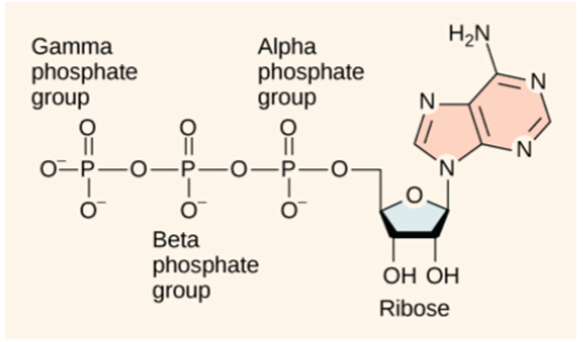What are Protozoa
Answer: Like bacteria and yeast
You might also like to view...
Dephosphorylation of the adenosine triphosphate molecule (shown in this diagram) generally results in only the removal of the Gamma phosphate and Beta phosphate groups, leaving the Alpha phosphate group bonded to the adenosine molecule. How can you explain this behavior?

a. The enzymes that catalyze dephosphorylation reactions become saturated after bonding with two phosphate groups and cannot bond to a third.
b. After two phosphate groups are removed from ATP, the resulting solution is too acidic to sustain additional dephosphorylation reactions.
c. Without the repulsive forces generated between phosphate groups, the adenosine monophosphate molecule is much more stable.
d. Dephosphorylation can proceed with the Alpha phosphate group, but cells only require the energy released from Gamma and Beta phosphate groups.
Which of the following statements would be true of Figure 46-4?
a. Hemoglobin would be 50% saturated at a of 30 mm Hg at the highest pH. b. Hemoglobin would be 50% saturated at a of 25 mm Hg at the lowest pH. c. At a of 40 mm Hg, the hemoglobin for the pH 2 line would be 80% saturated. d. At a lower pH, the oxygen dissociation curve is shifted to the right. e. At a higher pH, the oxygen dissociation curve is shifted to the right.
A falsifiable hypothesis cannot be tested
__________________ Indicate whether the statement is true or false.
A description of the rules and/or steps behind the reasoning process is known as:
A. business analytics. B. predictive analytics. C. causal relationships. D. logic.